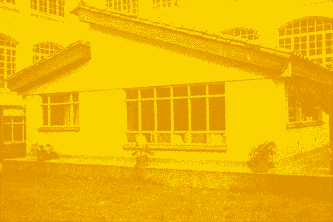The mother kangaroo method
International interest
The Mother Kangaroo Method is supported by UNICEF’s Regional Office for Latin America and the Caribbean. The WHO, in addition to rewarding a prize to the authors of the innovation, has supported the implementation of the Mother Kangaroo Method.
The programme’s norm of feeding solely with breast milk is consistent with the World Health Organisation, which considers milk from the baby’s mother to be ideal in that it provides specific nutrients for the pre-term infant, along with equally specific immunological components, and it allows for the adaptation of immature digestive organs (WHO 1985, and Anderson 1986).
The method has been applied at Hammersmith Hospital in London, with good results. Tube feeding of babies under 1,500 grams diminished; recovery from severe illnesses improved and, thanks to the kangaroo position implemented in this intensive care unit, did not require prolonged hospital stays (Whitelaw and Sleath, 1985). Babies were cared for in the kangaroo position from as early as three days after birth, and it was observed that the position stimulated the production of breast milk. In addition, babies who weighed less than 700 grams were able to maintain their body temperature and not suffer periods of apnea. A similar experience took place in Dusseldorf, Germany and at the Soenderborg Hospital in Denmark, where the method was used successfully and achieved stable respiration in children fed orally (Anderson 1989, and Moeller-Jensen 1987). In Sweden maternal breast feeding was allowed in the kangaroo position in addition to supplements the infants were receiving.
In 1986, at the San Gabriel Hospital in La Paz, Bolivia, a programme was implemented for babies weighing more than 1,000 grams. During the first year, the programme followed 25 babies with gestational ages between 34 and 36 weeks and with birth weights of between 1,501 and 2,000 grams (Yasick et al, 1986). The hospital stays reported during follow-up were 12 days. The most frequent causes of illness during followup were connected with the respiratory tract. The study also reported that aspects of psychomotor development, coordination and adaptation, as well as language development, were completely normal, even reaching higher parameters than those of babies cared for traditionally in incubators. In 1987, a programme of early discharge was begun at the Mother and Child Institute in Lima, Peru (Urquizo, 1988). During that year, 70 premature babies were treated whose gestational ages were between 32 and 36 weeks and whose birth weights were between 1,400 and 2,000 grams. The average hospital stay for half of the babies was one week. Brazil has more than 60 Mother Kangaroo Programmes, with known results and benefits.
Replications of the Mother Kangaroo Method, and similar experiences, have been carried out in other cities in Colombia. In Bogota other hospital institutions have initiated early discharge programmes. In Latin America there are Mother Kangaroo Programmes in Bolivia, Brazil, Costa Rica, Cuba, Ecuador, El Salvador, Guatemala, Honduras, Mexico, Nicaragua and Peru.
The industrialised countries that have replicated the Mother Kangaroo Method include Germany, Denmark, Spain, the United States, France, England, Italy, Holland and Sweden, among others.
DOWNLOAD THE BROCHURE PDF
albanian (0.9 MB)spanish (0.6 MB)
english (0.6 MB)
serbian (0.6 MB)








 COUNTRY OF ORIGIN
COUNTRY OF ORIGIN OUTSTANDING IDEASS PROJECTS
OUTSTANDING IDEASS PROJECTS